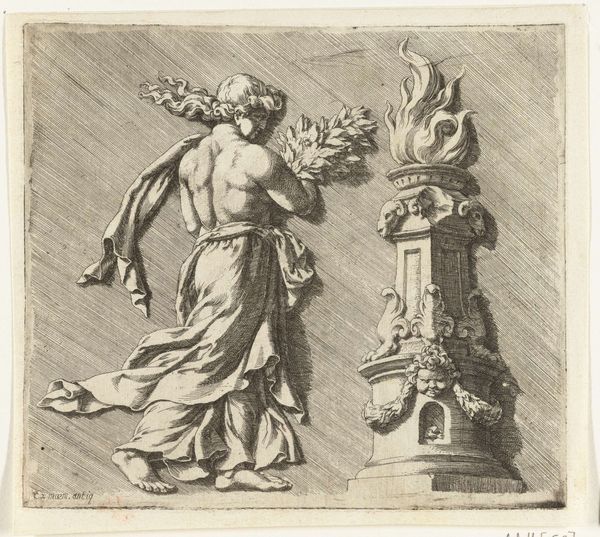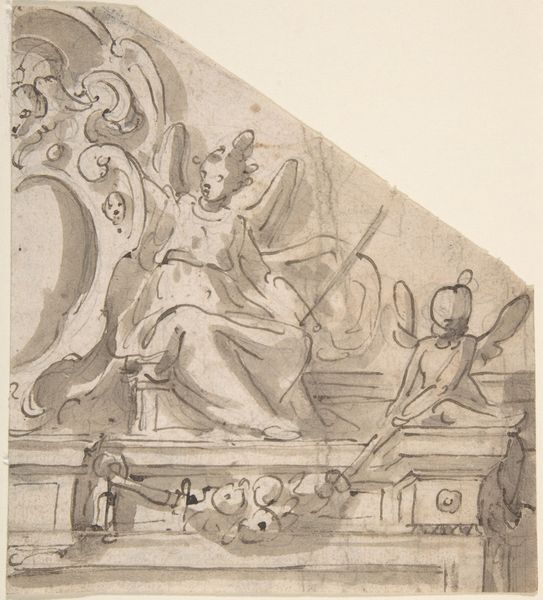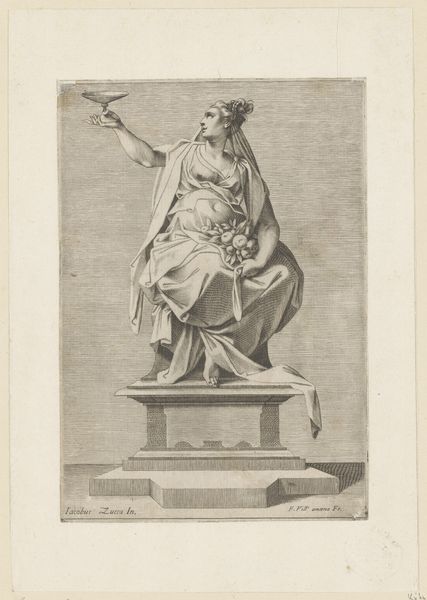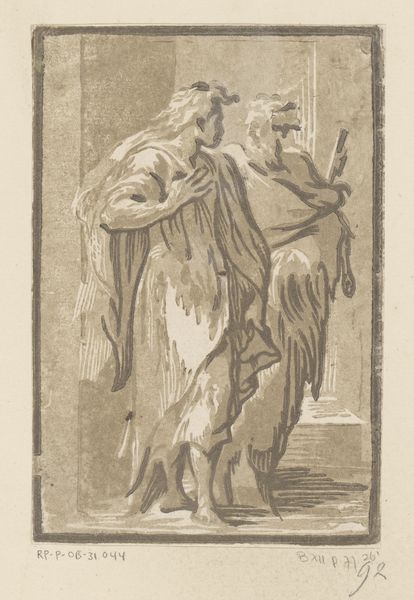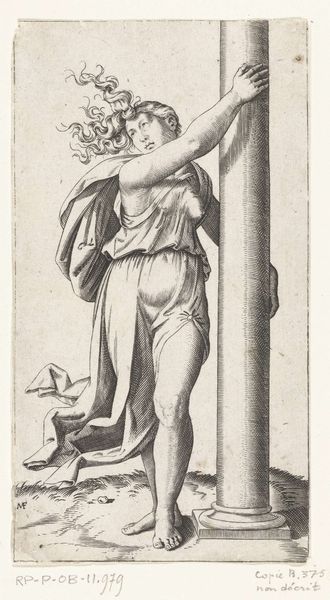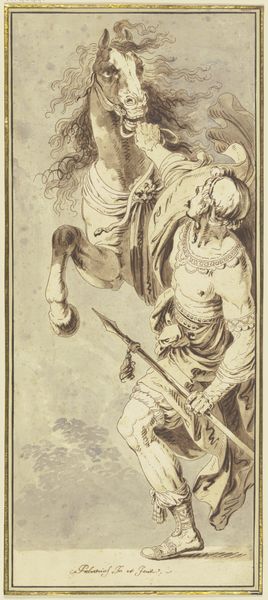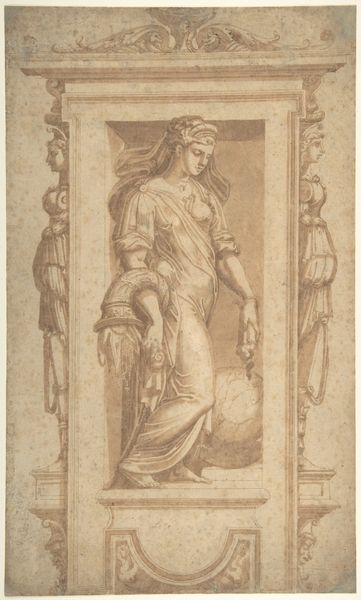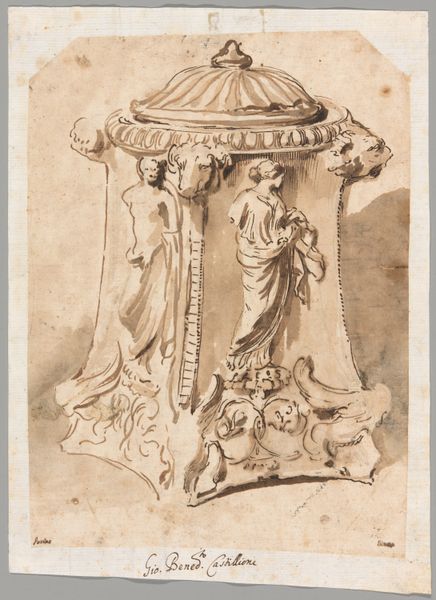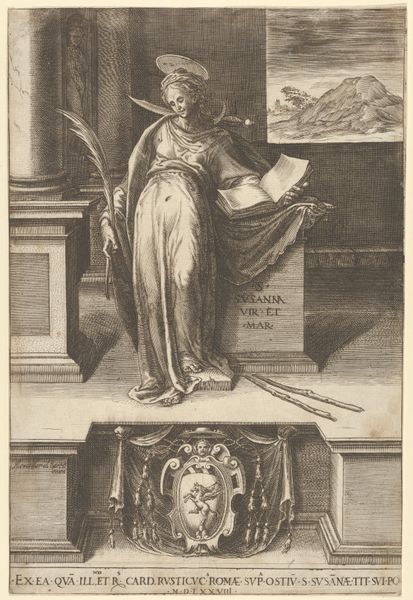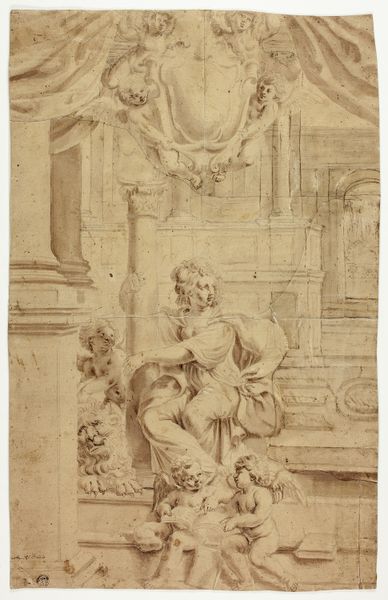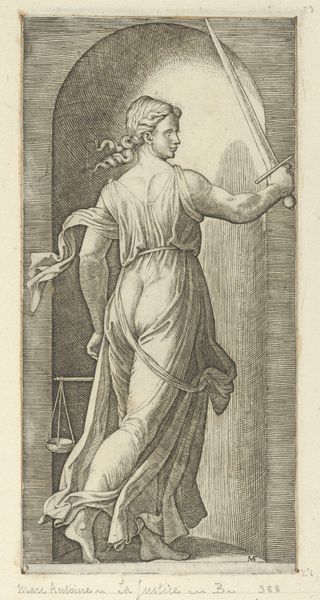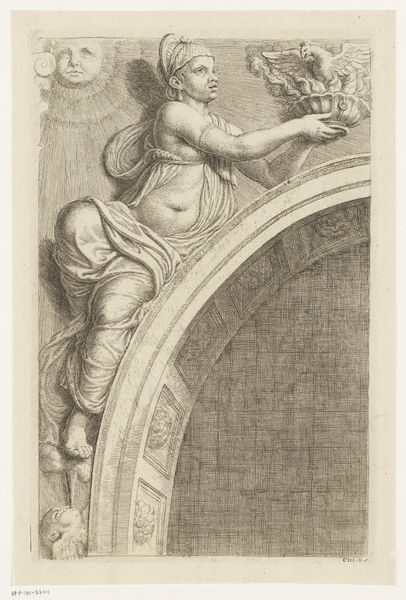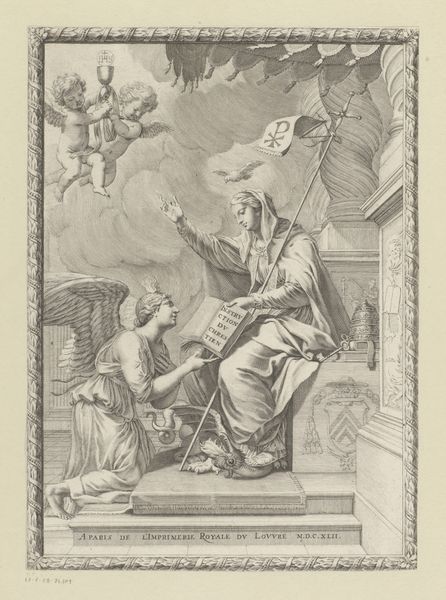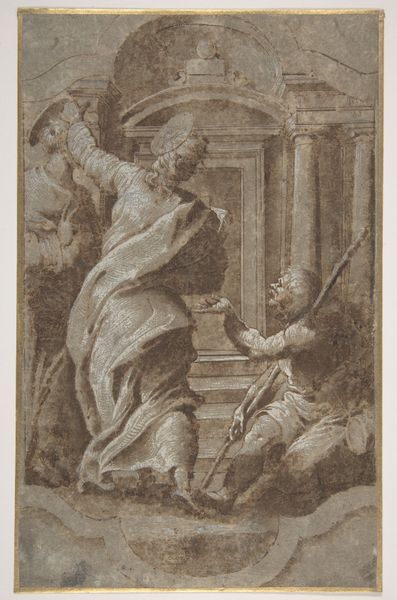
drawing, paper, ink
#
drawing
#
allegory
#
baroque
#
pencil sketch
#
landscape
#
caricature
#
classical-realism
#
figuration
#
paper
#
ink
Dimensions: height 187 mm, width 170 mm
Copyright: Rijks Museum: Open Domain
Curator: The first thing that strikes me is how delicately this study is rendered. There's a classical calm despite the movement in the figure and flame. Editor: I'm drawn to the materiality here. Jan de Bisschop used ink on paper, but look at how he evokes three-dimensionality with just line and wash! The process of sketching, of rapid study, is right there on the surface. Curator: Absolutely! And Bisschop, active mid-17th century, titles this piece, "Vrouw bij een altaar," or "Woman by an altar". It seems allegorical. We see the woman, draped, holding perhaps a laurel wreath or some symbol of triumph or offering, next to the altar with a burning flame. Consider the weight of these symbols, their long histories. Fire representing divinity or passion, laurel connoting victory and status. Editor: Indeed. This wasn't just ink appearing spontaneously. The choice of subject and style harkens back to ancient Greek and Roman art. I'm curious about Bisschop's motivations. Was this preliminary sketch, perhaps intended for something larger? What was his engagement with labor of drawing to generate revenue? And what kind of ink was available in the Netherlands at the time, with such sepia tones? These colors point us toward understanding that time. Curator: The rendering feels incredibly intentional. Notice the woman's contrapposto stance; it’s so elegantly done! He is drawing upon ancient sources to instill dignity and symbolic value. Editor: He may also be dealing with issues of accessibility, and maybe making high art reproducible, saleable, consumable. And how does the social context affect the artist himself? He must also sustain himself from materials and consumption of artwork. I see more beyond these visual cues. Curator: That's a valid point. We shouldn’t just treat allegorical objects as simply metaphors. There were indeed social and economic systems in play that gave these symbols weight, imbuing them in everyday life. Editor: This tension between representation and material production shapes how we perceive even something seemingly straightforward as a draped woman next to a sculpted fire. Curator: Food for thought, and maybe the fire keeps on burning with different outlooks.
Comments
No comments
Be the first to comment and join the conversation on the ultimate creative platform.
